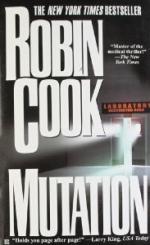|
This section contains 596 words (approx. 2 pages at 300 words per page) |

|
A same-sense mutation is form of silent mutation where a change in the base sequence of a gene does not result in a change in the amino acid sequence of the protein for which the gene carries the genetic instructions. Because the genetic code contains multiple codes for the same instructions, the genetic code is considered a degenerate code. Because the genetic code is degenerate, a same-sense mutation produces codons that carry the same instructions for the synthesis of proteins as do the normal, non-mutated, codons.
Changes in nucleic acid (DNA or RNA) sequencing are natural and those that occur during replication are usually repaired by specialized repair mechanisms. When these mechanisms fail to correct a change (revert the sequence of bases back to their normal state), a mutation results. As a result of a same-sense mutation, however, there is no change in the insertion of...
|
This section contains 596 words (approx. 2 pages at 300 words per page) |

|


